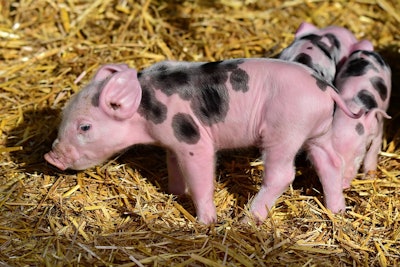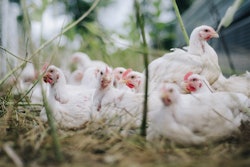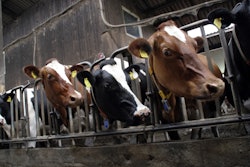
In mid-2017, the European Union’s Committee for Medicinal Products for Veterinary Use, a division of the European Medicines Agency, confirmed an EU-wide ban on the use of zinc oxide at a medicinal level in weanling pig feed by 2022. While there appears to be no such similar ban on the horizon for U.S. pork producers, the industry is beginning to consider alternatives to zinc oxide for the prevention of e. coli diarrhea in piglets.
Concerns related to environmental impact, possible contribution to the increase of antimicrobial resistance, and the changes zinc oxide makes to piglets’ microbiota have all been cited as reasons to phase out the use of the feed additive in the EU, where an estimated 70% to 90% of producers use medicinal levels of zinc oxide, according to Pig Health Today. Zinc oxide began to rise in global popularity in the 1990s, as the swine industry transitioned from smaller operations to more modern, large-scale operations. This transition period in the industry created a change in the way swine producers wean pigs, decreasing the wean age from 28 days to as low as 14 days, when piglets’ immune system and gut health are not fully developed, creating a need for a way to protect young pigs from diarrhea and other gut health issues, which gave rise to the use of zinc oxide at a therapeutic level.
Data on zinc oxide’s effect on the environment is extremely limited, with the EU ban coming as a result of a study in Denmark that indicated the use of swine manure as a soil treatment has led to a significant increase in the presence of zinc in the soil, particularly during the most recent measurement period from 1998 to 2014. Throughout a pig’s lifetime, it will consume approximately 40 grams of zinc, or about the same as the amount of sugar in a standard can of soda.
The repercussions, however, of eliminating the therapeutic use of zinc oxide in the U.S. would have a tremendous impact on the pork industry, said Hubbard Feeds’ Swine Nutrition Manager Ernie Hansen.
“As with any change, an increase in zinc regulation would be difficult,” Hansen says. “Most certainly it would increase the cost of production, and I don’t think it would improve animal welfare or the safety of our pork supply.”
Additionally, the situation in the EU is simply much different than in the U.S., Hansen says.
“We have very good environmental manure management plans in the U.S. as to how many acres we need to utilize per animal unit, and that really minimizes the negative impact on the environment,” Hansen says. “Within the EU, there may be more animals per land mass. Fortunately, in the U.S. we have a vast land mass to apply animal products, like manure.”
Regardless of any potential negative effects of the use of zinc oxide, the process of looking into alternatives is positive for the industry. This is particularly true because zinc oxide is not a silver bullet to cure all problems in the industry, and it cannot replace proven, traditional swine health practices, such as proper hygiene, biosecurity, vaccination and acclimatization of new gilts into the herd, Hansen says.
“Those are absolutely the most critical aspects of pork production,” he explains. “Even when used in conjunction with an antibiotic or a mineral treatment such as zinc oxide.”
While the swine nutrition industry has developed dietary alternatives to zinc oxide, such as a yeast-based pre-starter and starter diet, zinc oxide remains the most affordable, effective method for preventing post-weaning diarrhea in piglets.
“Zinc is effective, and cost effective,” Hansen says. “Just because something is low-cost doesn’t mean it’s effective, but zinc oxide happens to be a technology that is effective and low cost.”
也有其他形式的锌,可以使用d as a component of a weanling pig’s diet, such as zinc sulfite or zinc chloride, as well as organic forms of zinc. Alltech, the parent company of Hubbard Feeds, offers one alternative through their BioPlex line of trace mineral additives. At this time, however, BioPlex is simply recommended as a source of zinc which allows for lower fortification levels in pigs’ diets, due to its superior bioavailability, Hansen says.
In terms of the larger picture, though, Hansen says everything comes back to animal husbandry and ensuring the best care for weanling pigs.
“When we wean the pig and put it under multiple stressors, we need to be able to do what’s right for that pig and for its welfare, because then it will remain healthier throughout its life,” Hansen said.
The rise in popularity of zinc oxide to prevent post-weaning diarrhea in the swine industry began with the evolution of how the world produces pork, and it is possible that further evolution could eventually lead to the elimination of the need for therapeutic mineral treatments like medicinal zinc oxide. ■




















![Optimix Andritz Scaled[1]](https://img.feedandgrain.com/files/base/wattglobalmedia/all/image/2023/05/optimix_Andritz_scaled_1_.645eb7a1ed508.png?auto=format%2Ccompress&fit=crop&h=112&q=70&w=112)
